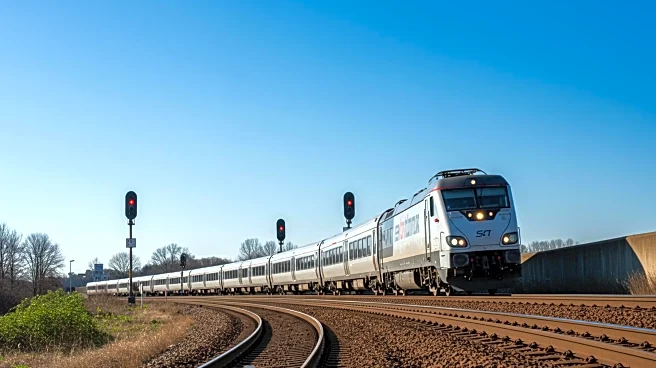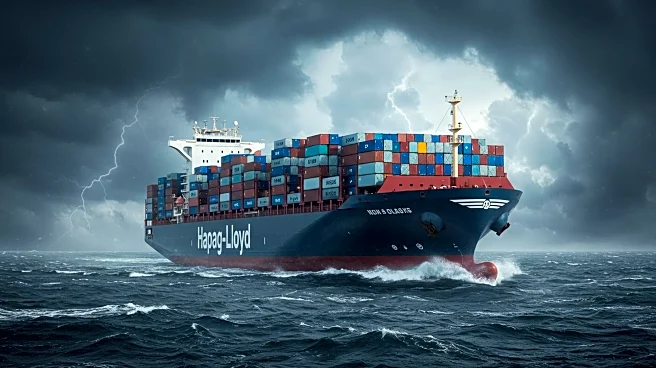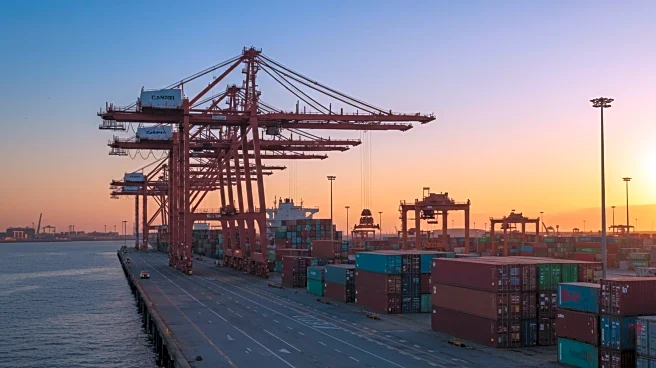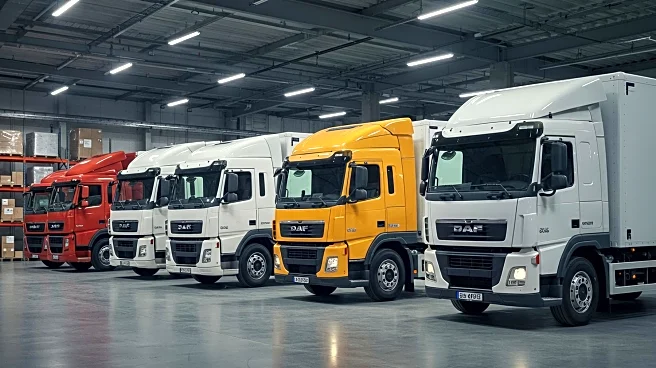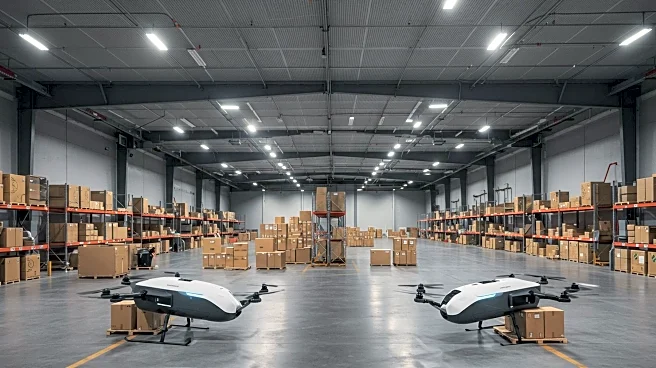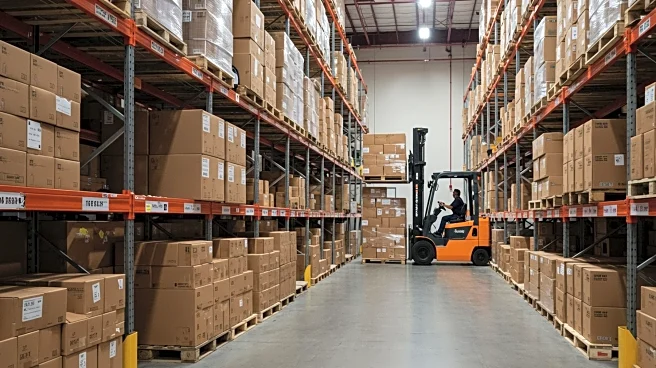What is the story about?
What's Happening?
The Association of American Railroads (AAR) reported an increase in U.S. rail carload and intermodal volumes for the week ending August 9. Rail carloads reached 227,327, marking a 2.4% annual rise. Seven out of ten carload commodity groups saw gains, including metallic ores and metals, grain, and coal. However, declines were noted in petroleum products, chemicals, and farm products excluding grain. Intermodal containers and trailers also saw a 3.4% annual increase, totaling 283,867 units. For the first 32 weeks of 2025, rail carloads rose by 2.8% annually, while intermodal units increased by 4.6%.
Why It's Important?
The increase in rail carload and intermodal volumes indicates a positive trend in the U.S. transportation sector, reflecting economic activity and demand for commodities. This growth can benefit industries reliant on rail transport, such as agriculture and mining, by facilitating efficient distribution. The rise in intermodal volumes suggests a robust logistics network, crucial for supply chain operations. However, declines in certain commodity groups highlight areas of concern, potentially affecting related industries. Overall, these trends can influence transportation policies and investment decisions.
What's Next?
Continued monitoring of rail and intermodal volumes will be essential to assess the sustainability of this growth. Stakeholders, including transportation companies and policymakers, may focus on addressing declines in specific commodity groups. Future reports from AAR will provide insights into ongoing trends and potential adjustments in logistics strategies. Additionally, economic factors such as commodity prices and demand shifts will play a role in shaping the transportation landscape.
AI Generated Content
Do you find this article useful?


